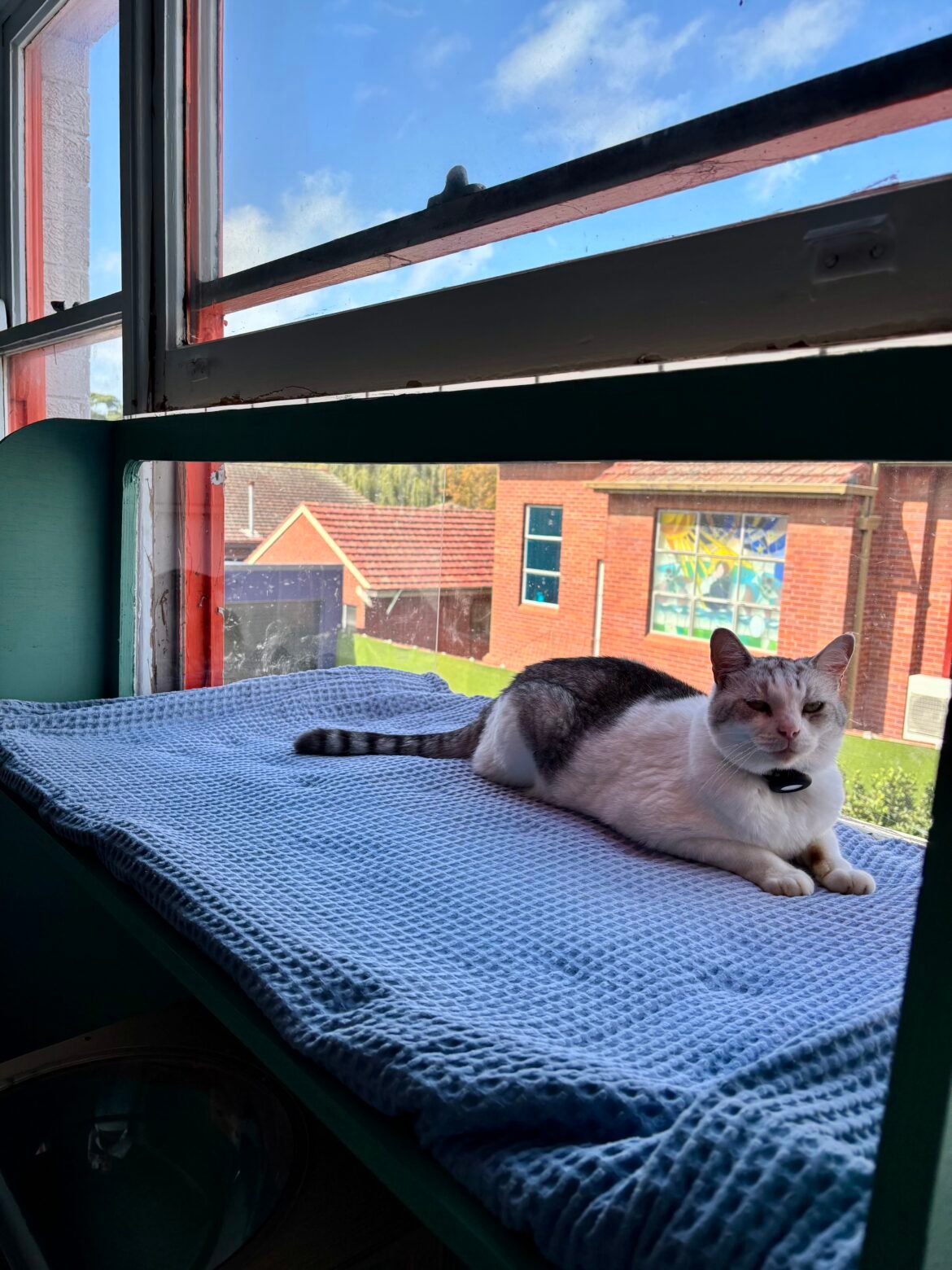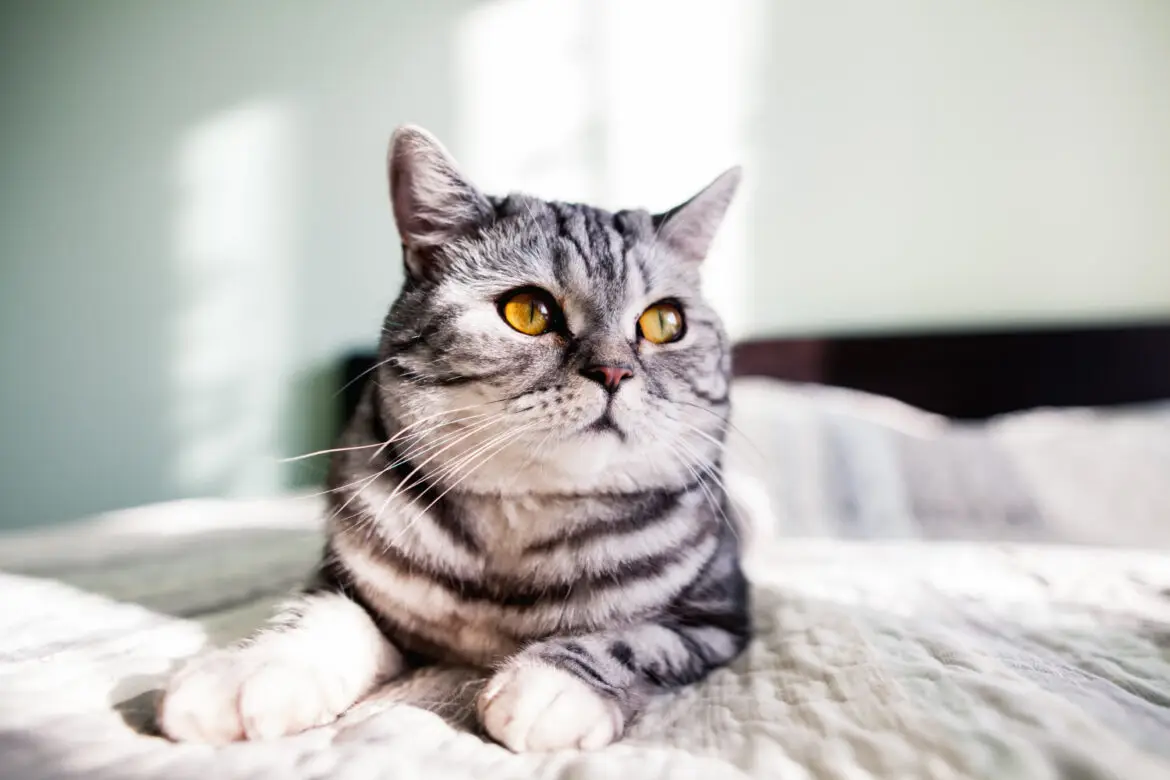Cats are known for their fastidious grooming habits, often spending hours licking themselves to clean and maintain their fur. But why do cats lick themselves so much? Is it just a matter of hygiene or is there more to this behaviour?
In this article, we will explore the reasons behind why cats lick themselves and what it means for their overall health and well-being. From self-grooming to communicating with other cats, there are several explanations for this seemingly simple behaviour that may surprise you.
What is self-grooming?
Self-grooming is a natural behaviour that is instinctively ingrained in cats. It refers to the act of cleaning oneself, using their tongues and paws to remove dirt, loose hair, and debris from their fur. This behaviour is not limited to just keeping themselves clean but also serves several other purposes for cats.
Firstly, self-grooming helps to distribute the oils produced by the cat’s skin throughout their coat, which keeps it healthy and shiny. This also helps to regulate body temperature, as the oil acts as an insulator against hot or cold temperatures.
Secondly, self-grooming serves as a form of relaxation and stress relief for cats. Similar to how humans may engage in activities like meditation or yoga to unwind and destress, cats use self-grooming as a way to relax and calm themselves.
Thirdly, self-grooming also helps to remove dead hair from the cat’s coat, preventing tangles and matting. This is especially important for long-haired breeds who may be more prone to develop mats if not groomed regularly.
Reasons behind excessive self-grooming
There are several reasons why a cat may engage in excessive self-grooming, which can also be referred to as overgrooming. Here are some of the common causes:
Stress or anxiety
Stress or anxiety is a significant factor that can lead to excessive self-grooming in cats. When a cat feels threatened or uneasy, it may resort to grooming as a coping mechanism. This behaviour can become more pronounced in situations such as moving to a new home, the addition of a new pet or family member, or changes in routine. Self-grooming helps the cat to soothe itself, similar to how humans might bite their nails or fidget when anxious.
Chronic stress or anxiety can trigger an ongoing cycle of overgrooming, leading to areas of hair loss and irritated skin. It’s crucial for cat owners to identify and address the root cause of their cat’s stress. Providing a stable, predictable environment and ensuring ample mental and physical stimulation can help mitigate anxiety.
Allergies
Cats can also develop allergies to various substances, such as certain foods, environmental triggers like pollen or mould, or even parasites like fleas. In response to these allergens, a cat may excessively groom itself in an attempt to alleviate the discomfort caused by itching or inflammation.
If you notice your cat overgrooming and suspect allergies may be the cause, it’s essential to consult with a veterinarian for proper diagnosis and treatment. They may recommend allergy testing and prescribe medication or dietary changes to help manage your cat’s symptoms.
Plus, keeping your cat’s environment clean and free of potential allergens can also prevent them from developing allergies in the first place.
Pain or discomfort
Cats may also over groom if they are experiencing pain or discomfort. This could be due to an injury, arthritis, dental issues, or other underlying medical conditions. In these cases, self-grooming may provide temporary relief for the cat. However, continued excessive grooming can lead to further irritation and make the underlying issue worse.
As a responsible pet owner, it’s crucial to monitor your cat’s grooming habits and look out for any changes that may indicate pain or discomfort. Regular check-ups with a veterinarian can help identify and address any underlying health concerns before they escalate.
Boredom or lack of stimulation
Cats are natural hunters and need mental and physical stimulation to thrive. If a cat is not provided with enough opportunities to play, explore, and engage in their instincts, they may turn to excessive self-grooming as a way to release pent-up energy or boredom.
As a pet owner, it’s essential to provide your cat with toys, scratching posts, and other forms of enrichment that allow them to satisfy their natural behaviours. Regular play sessions and designated “hunting” activities can also help prevent boredom and decrease the likelihood of overgrooming.
Obsessive-compulsive disorder (OCD)
Just like humans, cats can also develop OCD-like behaviours. This can lead to excessive self-grooming, as the cat becomes fixated on certain areas of their body and cannot stop grooming despite causing themselves harm.
If you suspect your cat may have OCD, it’s essential to consult with a veterinarian for proper diagnosis and management. They may recommend behaviour modification techniques or medication to help control your cat’s compulsive behaviours.
Skin conditions or parasites
Underlying skin conditions such as allergies, fungal infections, or hormonal imbalances can also cause a cat to over groom in an attempt to relieve discomfort caused by itching or irritation. Parasites like fleas can also lead to excessive grooming as the cat tries to remove the pests from their coat.
Regular grooming sessions where you can check your cat’s skin and coat for any abnormalities can help catch these issues early on. If you notice any signs of skin irritation or parasites, consult with a veterinarian for proper treatment.
So these are some of the common reasons behind excessive self-grooming in cats. As a cat owner, it’s essential to observe and understand your cat’s behaviour to ensure their physical and emotional well-being. If you notice any changes or concerns, don’t hesitate to seek professional help from a veterinarian.
Why A Regular Grooming Routine Is Important
As discussed earlier, grooming plays a crucial role in maintaining a cat’s overall health and well-being. But why is it important to establish a regular grooming routine for your feline companion?
Firstly, regular grooming helps remove dead hair and debris from the cat’s coat, preventing tangles and mats that can be uncomfortable or painful for them. This is especially important for long-haired breeds who may need more frequent brushing to prevent matting.
Secondly, grooming allows you to check your cat’s skin and coat for any signs of abnormalities, such as parasites or skin conditions. As mentioned before, early detection of these issues can prevent them from escalating into more severe problems.
Thirdly, grooming is an excellent opportunity to bond with your cat. By establishing a regular grooming routine, you can build trust and strengthen your relationship with them. Plus, it helps desensitise them to being handled and touched, making future visits to the veterinarian or other handling situations less stressful.
Moreover, grooming can also improve your cat’s overall appearance. Regular brushing and bathing can help distribute natural oils throughout their coat, giving it a healthy shine. It also helps eliminate dander and reduce shedding, which can be beneficial for allergy sufferers in the household.
Mistakes to Avoid During Grooming
Grooming your cat may seem like a simple task, but there are some common mistakes that pet owners should avoid to ensure their cat’s safety and comfort.
One mistake is using human grooming products on cats. Cats have different pH levels in their skin compared to humans, making them more susceptible to irritation or even toxicity from certain ingredients found in human shampoos or conditioners. Always use grooming products specifically formulated for cats.
Another mistake is neglecting sensitive areas such as the ears and paws during grooming. These areas can be easily overlooked, but they also require attention and care. Regularly inspect and clean your cat’s ears, and don’t forget to trim their nails if necessary.
It’s also crucial to use proper grooming tools. For example, using a slicker brush on a cat with short hair may be too harsh and cause discomfort or even injury. Do your research and choose the right grooming tools for your cat’s coat type.
Lastly, it’s essential to approach grooming in a calm and patient manner. Cats can sense stress or anxiety from their owners, and this can make them anxious or agitated during grooming sessions. Always remain calm and reward your cat with treats or praise throughout the process to create a positive association with grooming.
Does Your Cat Need Professional Grooming?
Some cats may require professional grooming services, especially those with long or thick coats that are prone to matting. Professional groomers have the expertise and proper tools to handle these coats safely and efficiently.
Additionally, if your cat has a medical condition that requires special grooming care, such as skin allergies or mobility issues, professional groomers can provide the necessary accommodations.
However, not all cats need professional grooming. Regularly brushing and bathing at home can be sufficient for most cats. It’s essential to consult with your veterinarian and groomer to determine if your cat would benefit from professional grooming services.
Plus, professional grooming can be an added expense for pet owners. If you choose to take your cat to a groomer, make sure you research and find a reputable and experienced one who puts the safety and comfort of cats as a top priority.
Choose Hotel for Cats For A Stress-Free Vacation
Planning for a vacation but worried about your cat’s well-being? Look no further than Hotel for Cats! Our luxury retreat offers top-notch amenities and personalised attention to ensure your feline friend has a stress-free stay while you’re away.
With secure and comfortable accommodations, including private suites, enrichment activities, and custom bedding/furniture, our hotel is designed to meet all of your cat’s needs. Plus, our team is run by a caring vet who puts the safety and comfort of cats at the forefront.
We also offer exclusive discounts for longer stays and are committed to accommodating your schedule with flexible check-in/check-out options. Book now and give your cat the ultimate pampering experience at the Hotel for Cats. Don’t forget to mark peak periods in your calendar, and rest assured that we will not offer a lower price for the same dates.
FAQs
Why do cats spend so many waking hours grooming?
Cats spend a significant portion of their waking hours grooming because it is an essential part of their hygiene and comfort. By grooming, cats remove dirt, spread natural oils across their fur, and regulate their temperature. The act of cat groom also helps them relax and reduce stress. It’s a natural behavior that keeps their coat in good condition and helps them feel secure.
What does excessive licking indicate in cats?
Excessive licking in cats can indicate several health issues, such as skin infections, skin allergy, or even psychological stress, which might manifest as displacement behavior or obsessive grooming. If your cat decides to begin grooming excessively or the grooming appears to focus intensely on one area, leading to hair thinning or skin damage, it is important to consult with a veterinary medicine professional to rule out underlying issues.
How do cats groom each other?
Cats groom each other through a behavior known as mutual grooming. Mutual grooming typically occurs between familiar cats and serves multiple functions: it helps strengthen social bonds, provides comfort, and helps reach areas that are difficult for a cat to groom on its own. This behavior is especially common in a family of cats or those that live closely together and have a good relationship.
When should you be concerned about your cat’s licking habits?
You should be concerned about your cat’s licking habits if the licking becomes obsessive or excessive, leading to visible changes like hair thinning or skin lesions. This could be indicative of a health problem such as a skin allergy or an emotional issue such as anxiety. Additionally, if the cat licking disrupts normal activities or if skin infections are noticed, it’s advisable to seek advice from a veterinary medicine professional to ensure proper care and treatment.
Conclusion
In conclusion, grooming is an essential part of caring for your cat and should be incorporated into their regular routine. Not only does it help maintain their physical health, but it also strengthens the bond between you and your feline companion.
By avoiding common mistakes and being aware of your cat’s grooming needs, you can ensure they stay happy, healthy, and well-groomed throughout their lives. And when you need to go on a vacation or have a busy schedule, remember that the Hotel for Cats is here to provide them with the utmost care and comfort.









